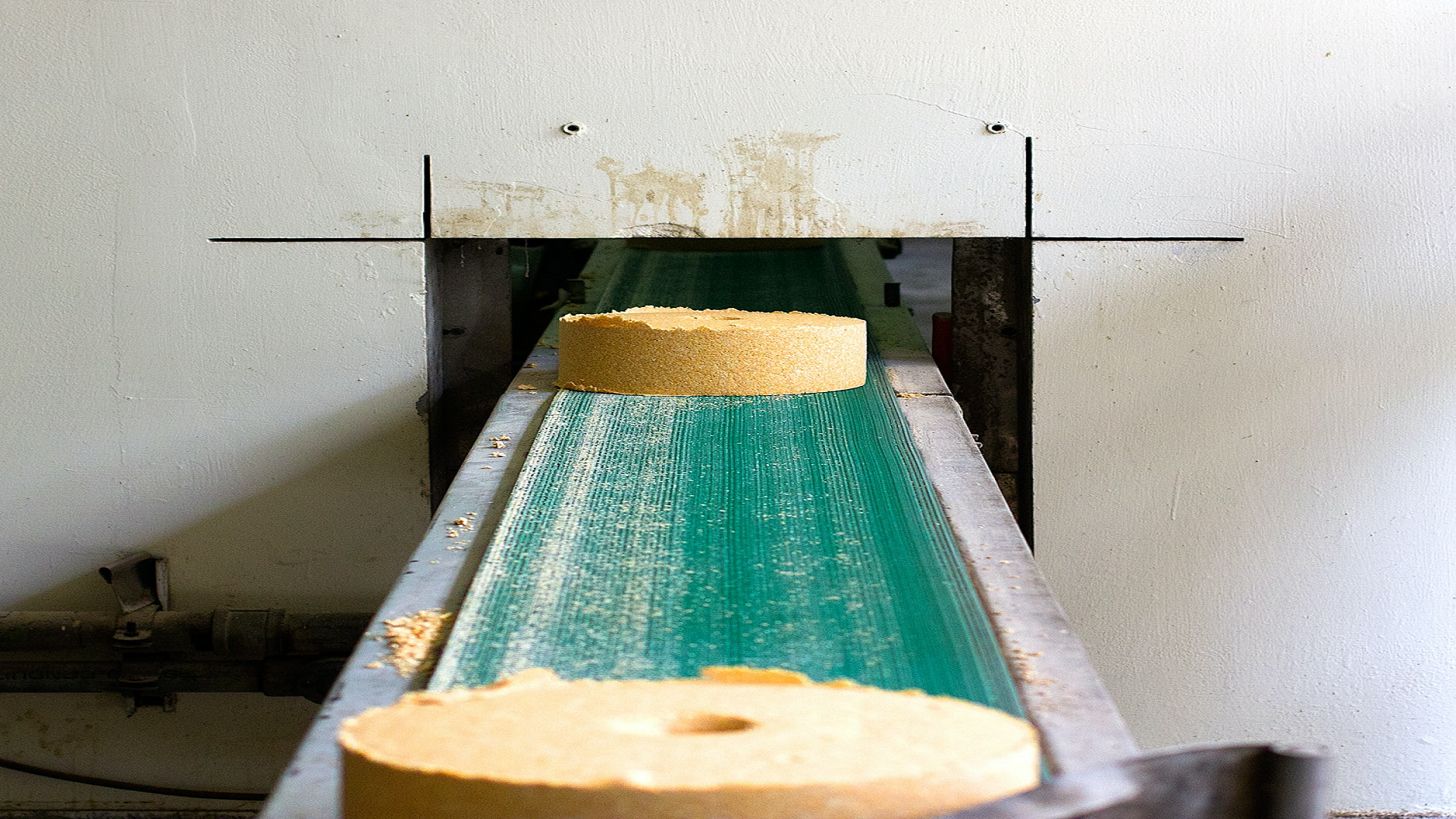Basic Motor Control, Must know Subject for Every Industrial Electrical Engineer.
Motor is a power unit that imparts motion as defined by Merriam Webster dictionary. It might seem such a simple unit but to the industrialists, it does wonders.
Just imagine moving, say, a ton of a load. Robust manpower is required to do this. However with just a small unit of motor connected to the conveyor belt, this work is hugely simplified. The costs required for this are also lower and are not recurrent as compared to the manpower. It is therefore advisable to have few control skills of the 3 phase motor using contactors.
 The following are some basic motor control systems I sampled for you:
The following are some basic motor control systems I sampled for you:1. DIRECT ON-LINE MOTOR CONTROL SYSTEM
This is the simplest way of controlling a motor. The end points of the motor coils(u1,v2 and w2) are shorted while the start points of the coils are connected to the lines to form a Star connection. The control circuit is connected between one line and the neutral. When using this system, the motor (load), should not exceed 5 kilowatts. The connection schematics as designed using CMH Constructor 13.0 Software is as shown below:
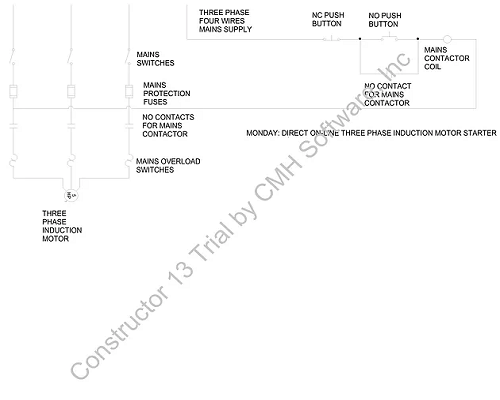
2. FORWARD-REVERSE MOTOR CONTROL SYSTEM
In many industrial applications, it is always desired that the motor drives the conveyor belt in one direction at one instance then to the opposite direction in another instance. The forward-reverse motor control system comes in handy at such times. The motor moves in one direction when forward Normally Open Push button is pressed. The system prevents the motor from changing the direction unless the motor is stopped first and the reverse Normally Open Push button pressed to effect motion in the reverse direction. This prevents the damage of the motor.
Try implementing the below schematics to get this important industrial skill.
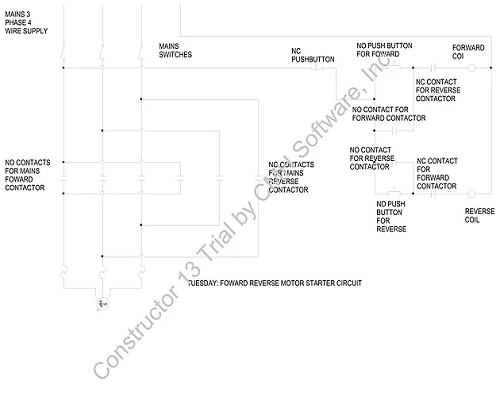
3. PHASE FAULT DETECTION/SINGLE PHASING
This refers to the situation where any of the 3 phases has a fault hence the load is forced to draw all its current from the remaining phases. In most instances it leads to blowing /burning up of the load due to overheating caused by excessive current drawn by the operational phases. Because of its destructive effects, the loads have to be protected from its destructive effects. This can be done by connecting three contacts to the lines. These are controlled by coils on the neutral as shown below:
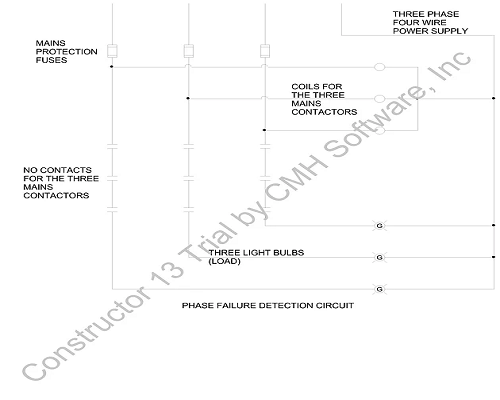
In the set up, I used three bulbs as the load but they can be replaced by a three phase induction motor. With this set up installed somewhere in your circuit if one phase has a fault, the whole system is disabled hence avoiding damages.
4. STAR-DELTA MOTOR CONNECTION SYSTEM
Star motor connection draws a lot of current from the grid. On the other hand, it enables the motor pick up the highest torque and speed within a short time. Delta motor connection draws considerably less current from the grid but doesn’t help motor attain its highest torque and speed. Because of these contrasting properties of the two systems, we can make use of them at different phases of motor control. This connection system uses the star connection to start the motor then disconnect it after 5 seconds and connect the delta connection. This ensures prudent use of power and proper motor speed for higher productivity.
The connection schematics is as shown below:
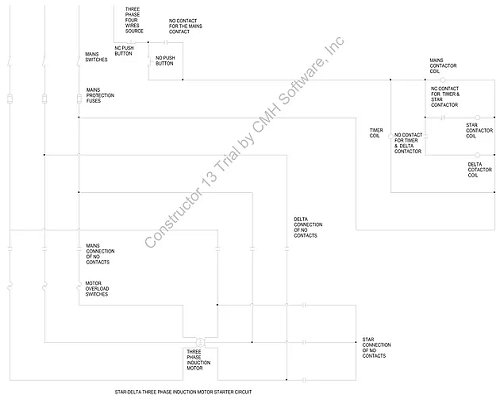
5. AUTOMATIC CHANGEOVER SWITCH
Abrupt power losses usually lead to damages to electrical appliances in an industry, motors included. Again they lead to a halt in production process. Because of these effects, it is desirable that a backup power source such as a generator be installed. This automatic switch should however give an interlude to confirm whether to bring in a generator or cut it off when the mains power is back.
The system I am proposing here first checks for a fault in any of the lines. It then gives an interlude of 5 seconds to turn the mains on after a power loss( due to a fault in any of the lines, total mains power loses etc.) and also to turn the generator on in case of power losses. This is done automatically just by the use of contactors.
The schematics is as shown below(I used 3 bulbs but you can connect a three phase induction motor). Try it out!
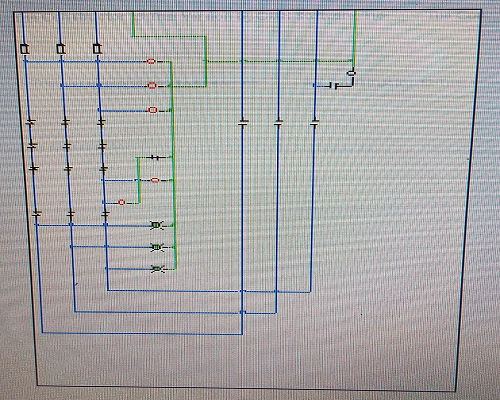
Above are the motor control techniques I sampled for you. Try them out, ask questions via the contact section down there and share with your friends.

